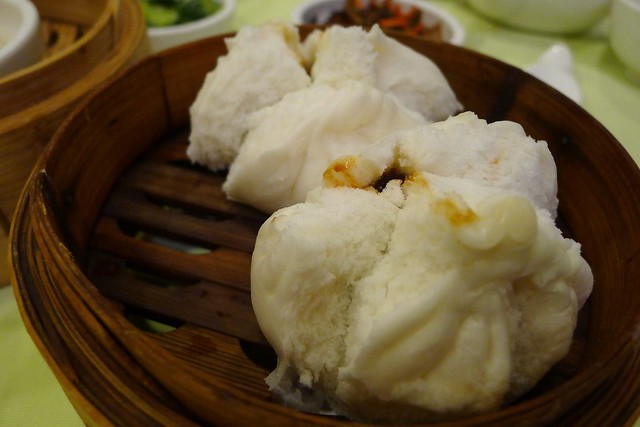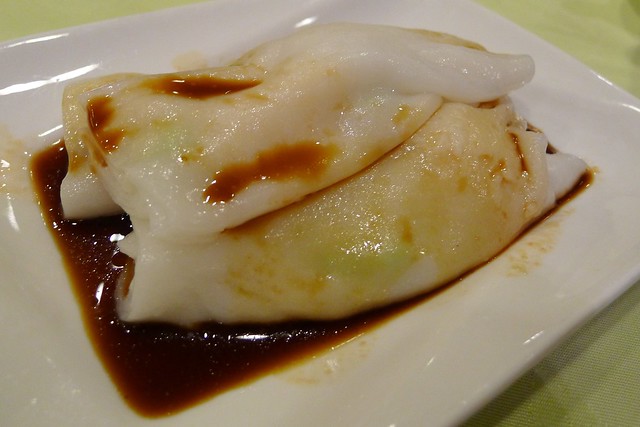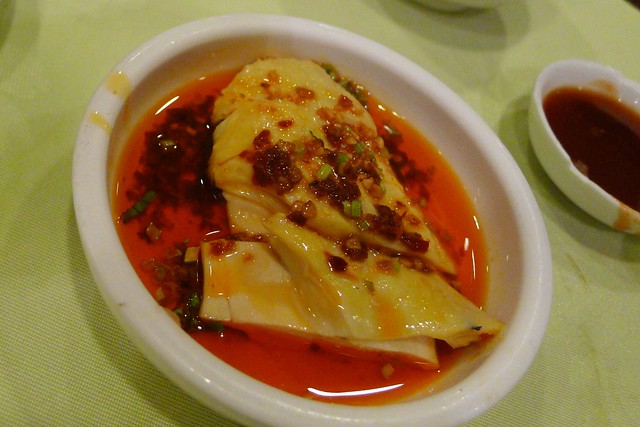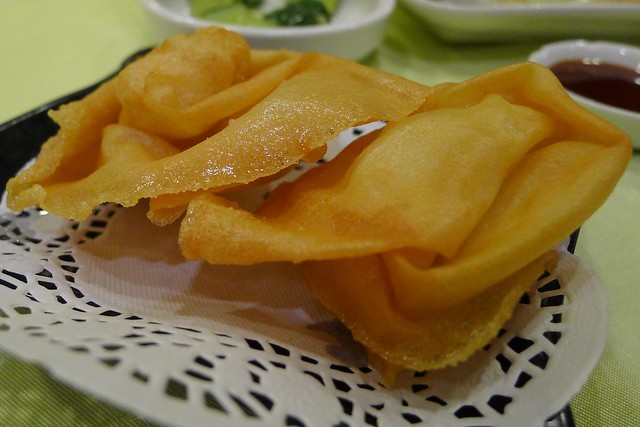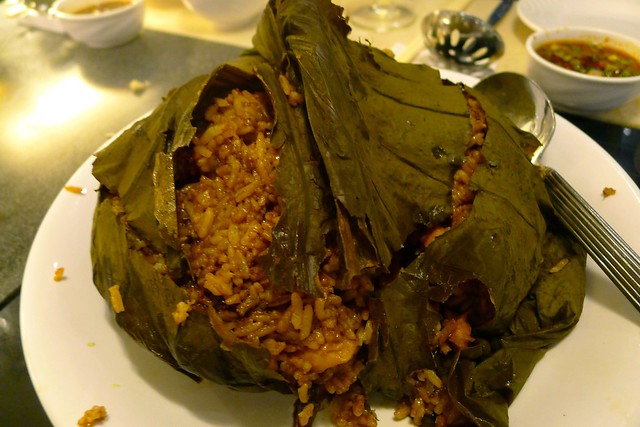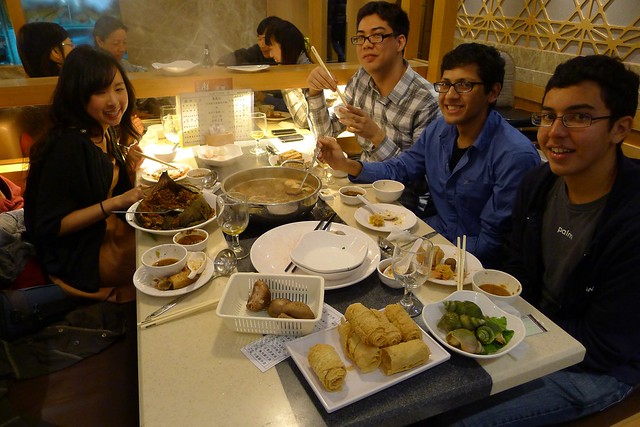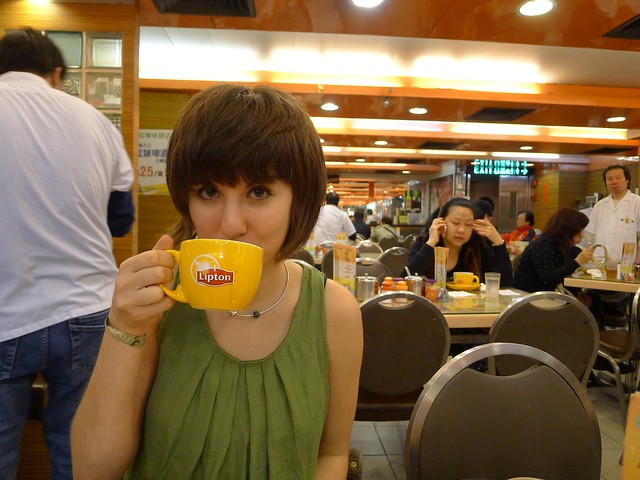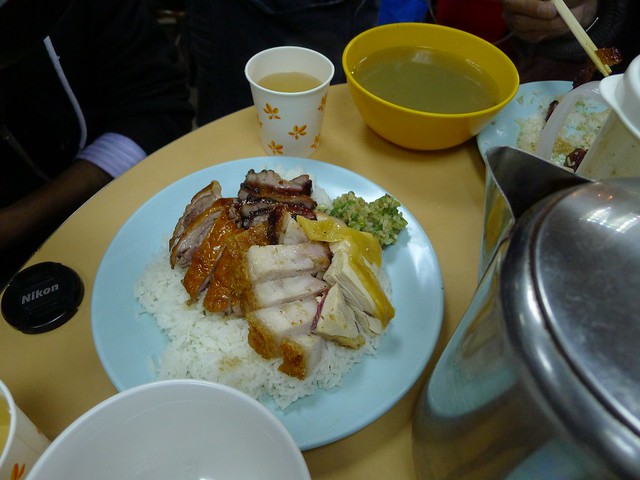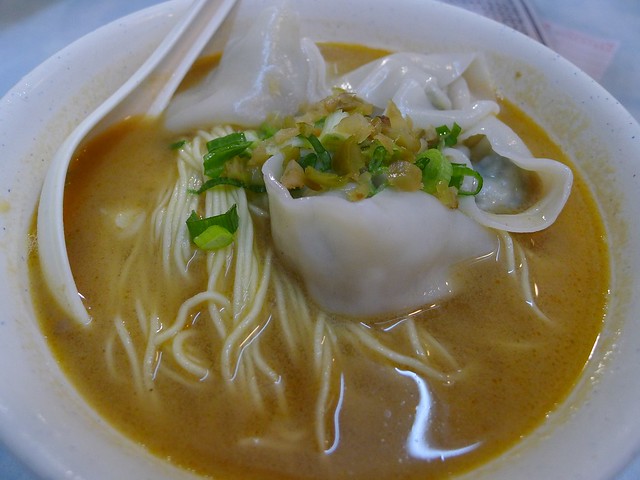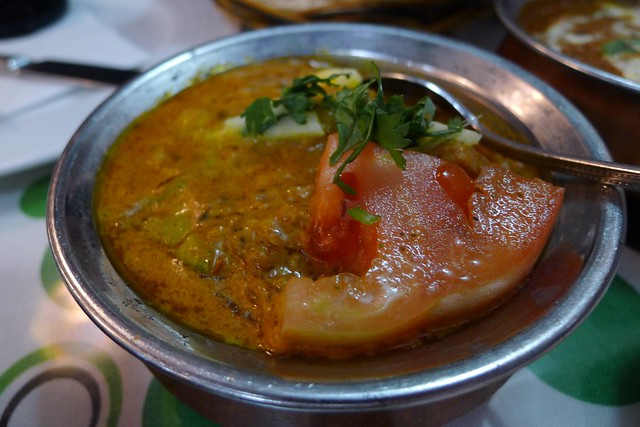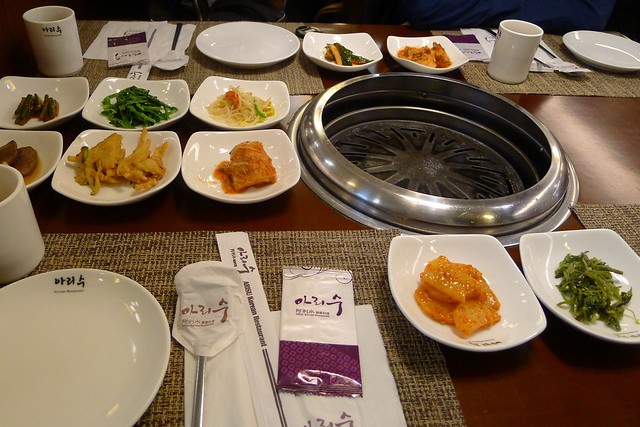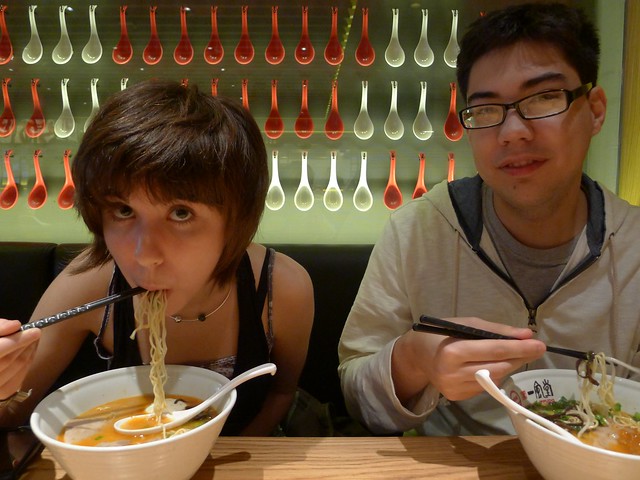Hong Kong in Food Porn
by mo on 02/20/2012The good news about food in Hong Kong is that it’s really hard to go wrong — everything is delicious. The bad news is that you’ll, at some point during your day, have to decide what to eat and it’s not easy.
How to Find Food
The only internet tool you need to aid in restaurant selection is OpenRice, Hong Kong’s Yelp equivalent. I recommend filtering by the location and then by dish or restaurant style – there is so much good food around that you shouldn’t really bother crossing town for something. Pay attention to prices and photos on OpenRice, and even if you can’t read chinese, it’s sometimes worth clicking on those reviews for the pictures.
Option B is to wander the streets, and though I did this if I was out shopping (okay, actually I would just go to the SOGO basement and buy takoyaki) it’s too easy to become paralyzed by choice. Just OpenRice it.
Dim Sum
Why hello Hong Kong. We come in peace, and in search of Dim Sum.
I mean, who doesn’t? Dim sum isn’t difficult to find in major US cities, but between the trek over to your local Chinatown and the social barrier to choosing dim sum over traditional (read: pancakes, omelets, and mimosas) brunch, the dim sum stars align less frequently than I would hope back home, particularly in large groups.
But with a dim-sum-ready team of travelers and readily available goods on nearly every block, all obstacles were vanquished. We sleep in, we wake up, and we DIM SUM IT!! to our hearts’ content.
The dim sum report is that actually, much of the available dishes were pretty similar to ones that exist in the US. Typically there was a bit more variety, but we didn’t see anything incredibly surprising on the menu or on other peoples’ tables.
The big difference though, was that every item had approximately 170% the flavor of the dim sum I’m accustomed to. This is your tongue on drugs? No, this is your tongue on Hong Kong dim sum.
If you’re ready to get militant about dim sum, apparently the place to go is Tim Ho Wan, a Michelin one-star restaurant. I’m sure it’s lovely, but we stopped by one day and the queueing was of the variety I normally reserve for Swedish clubs. In light of me being in the final stages of recovery from Post-Traumatic Queue Exhaustion after a semester in Scandinavia, we passed. And still ate plenty of good dim sum, elsewhere.
The hardest part about dim sum blogging is that since your food comes out one dish at a time, you will have the urge to just dig in, and may forget to photograph it…so I don’t even have pictures of some of the best things we ate. Alas.
One other tip: what are dim sum restaurants by day are often hot pot restaurants by night (dim sum is more of a lunch thing, hot pot a dinner affair). Which brings us to…
Hot Pot
A wintertime classic, hot pot is a mandatory experience in Hong Kong, as well as an exercise in teamwork. Bring four or five of your best friends to Tao Heung in Tsim Sha Tsui and put your name down on the list. While you wait, play in the electronics store downstairs, Fortress. Then head to 7-11, and loiter in a staircase for 15 minutes before heading back up to the restaurant.
When you finally get a seat, begin Challenge 1: Battle the Cantonese-only menu and order based on pictures (roughly 1/4 of the menu), color-coded lists of Cantonese words (the rest of the menu), using a combination of luck and basic kanji mastery.
Our results: We ordered WAY too much food.
After you order, they bring out a bunch of things and you make your own sauce. SO many things. Jane’s expert strategy was to just dump everything in in large quantities, and hers at least appeared to be the most delicious, so that’s the algorithm I’d advise.
Challenge 2: Order the dish pictured below.
We pulled this off successfully by pointing at the table next to us (who had received this before us), making hand gestures, and using the words “rice” and “leaf”. Not sure which of those steps were essential, YMMV.
Finally, our hot pot arrived, along with 20 plates of our mystery-order food (the waitresses were sort of giving us weird looks). Throw it in!
Hot pot is very similar to Japanese nabemono, although the dipping sauce is different and the Hong Kong version seems to involve more fish balls. (Either that, or we just ordered too many fish balls.) We also ordered this tube of fishball paste, where you squeeze it out of a tube (like icing a cake!) and it makes sort of a fishball noodle in the hotpot. Pro tip: cut the fish-noodle before squeezing the entire tube into the pot in one, long string.
The tofu rolls in the next photo (bottom right corner and just above the plate of meat) were fun — submerge them in the water with your chopsticks for ~30 seconds, sauce them up real good, and enjoy.
If anyone can identify the white stuff in the bottom left corner (yes, that’s what she said) please tell me what it is, because it tasted good but none of us could figure it out. Mushroom? Fish-based? Alien intestines?
In Japanese families doing nabe, there’s typically one family member who completely dominates all things nabe – temperature, when to put in what, when to take it out. I believe the technical term for this control freak is a nabe-bugyou in Japanese, a bugyou being a certain feudal-period shogun administrator. I’m not sure if there are nabe-bugyou in Hong Kong style hot pot, but none of us were particularly domineering, so after about an hour of hot pot our pace dropped off considerably, yet we kept slowly trying to push forward and consume most of what we’d ordered.
After people started dropping off like flies, we gave up, got the bill (surprisingly low), and headed back to HK Island, only partially defeated by the hot pot experience.
By far our most intense and epic meal. (For locals, this was probably just Regular Ordinary Cantonese Meal Time).
Cha Chaan Teng
Think Hong Kong-style diner. A wide range of comfort food, including pastries and omelets, but also sandwiches and meat, so you can choose whether you’re feeling more breakfast, more lunch, or both. This NYTimes Travel article explains cha chaan tengs pretty well.
We went to Honolulu Coffee Shop in Wan Chai one day for our usual 2 PM brunchtime. Went both breakfast and lunch, ordering egg tarts, an egg & pork with rice dish, and sandwiches (not pictured).
See, kinda dinery? I drank some yuanyang, a mixture of coffee and milk tea, making it taste like a cantonese bizarro chai bomb.
Friggin’ amazing. Huge fan of egg tarts and how they’re just slightly sweet. And flaky.
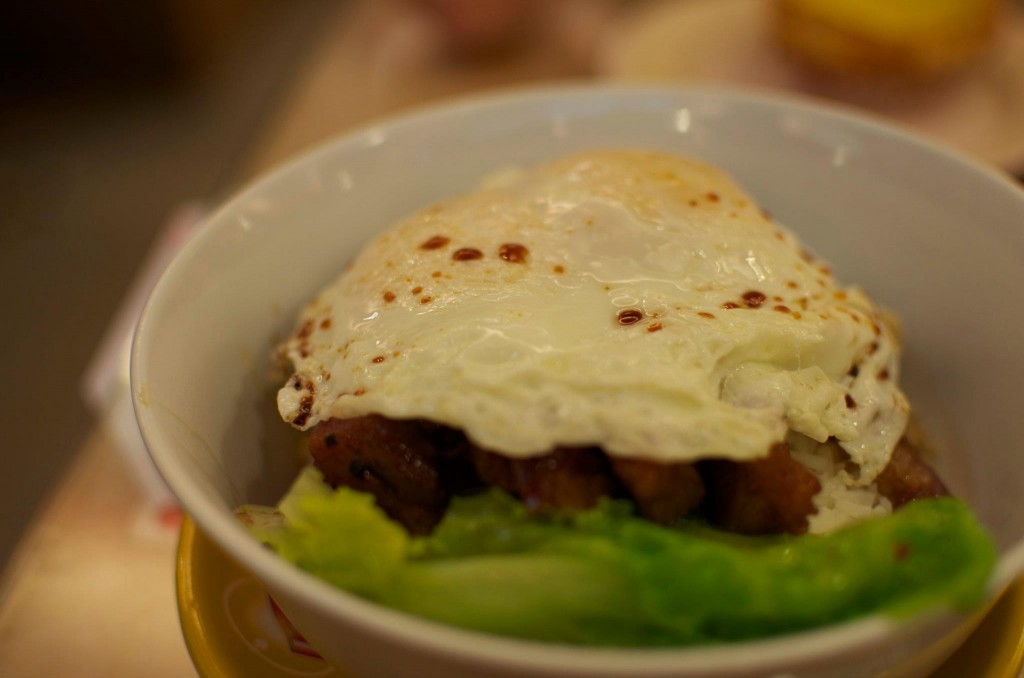
Props to Bhargav for capturing ALL THE YUMMY of this dish in one fabulous photo
Char Siu at Joy Hing
Here’s one where we were Doing It Right, thanks to Bhargav’s local resident friend, YinTing, who helped us follow in the footsteps of Anthony Bourdain. She brought us to Joy Hing, a char siu (bbq pork/other meat) restaurant deserving of its own Wikipedia page, and totally took charge. Like a boss.
Basically, all I can say is MEAT. Go there. Order some stuff. Eat it.
The green stuff is full of garlic and incredible.
Tan Tan Noodles
This was purely an OpenRice discovery — the best Hong Kong style food in our immediate vicinity while staying in Tin Hau was a restaurant called Sister Wah, a tiny hole-in-the-wall place like Joy Hing, serving Tan Tan noodles, which we discovered were incredible. The broth was very peanuty, and the dumplings were probably the best dumplings in a soup I’ve ever had. The only problem was that I could only eat approximately 1/3 of the noodles. Luckily, my travel buddies left a less embarrassing amount of noodles in their bowls.
Other Asian Food
Just because you’re in Hong Kong, don’t feel pressure to eat chinese food for every meal, as they have delicious eats from all around asia. The thai food we had in SoHo was very interesting (no pics, sorry) and didn’t taste anything like thai food I’ve had in the US. Having not been to Thailand I can’t comment on authenticity. That restaurant was where I discovered that my maximum mango enjoyment comes in the form of mango + sticky rice.
Time for a whirlwind tour of our non-chinese asian eats.
Indian Food at ChungKing Mansions – a giant apartment complex full of apartments-turned-Indian-restaurants. At the bottom, you’ll be hassled with flyers from each of the restaurants, so find the one you want and you’ll be led up some sketch-ass stairs to your restaurant. Ours was called Taj Mahal and pretty yummy, but not super spicy. Here’s the fish masala, my favorite of our selections.
Korean food at Arisu – where they start with completely the appropriate amount of kim chee. Do Korean bbq, and try the seafood pancake, which seems to be Korean okonomiyaki. It’s sort of like hot pot, but less of an Event and more like dinner.
Japanese Ramen at Ippudo – a Japanese chain that has come to Hong Kong in the last couple of years. I’ve had better ramen, but it was still quite yummy, and who doesn’t love some spoon decor?
Japanese snacks from 7-11 – I told you we were addicted. Let’s get Crunky and Meltykiss! This is what Katy Perry would do at 7-11 if she ended up there on a Friday Night.
Don’t forget your shanghai food
When you’re exhausted thinking about all your food options, don’t forget about your garden variety chinese restaurants. Our favorite was Shanghai 3.6.9, down the street from our Wan Chai crib. It was the very first place we ate in Hong Kong, around midnight after the 13 hour flight.
Tired and jetlagged, this is when we realized: well-chosen vacation destination, team.
If you’re still hungry, check out CNNGo’s 40 Hong Kong foods we can’t live without.

